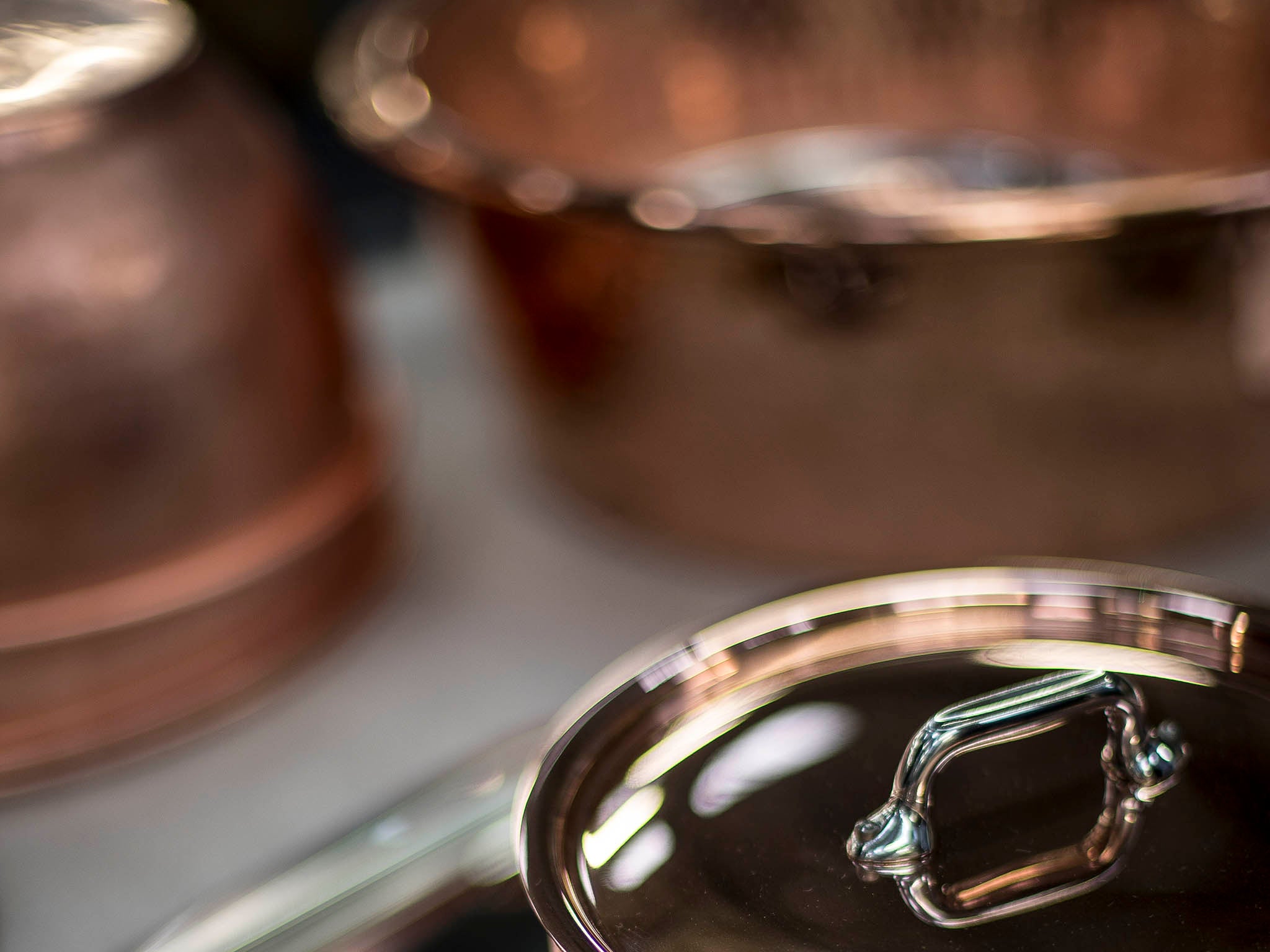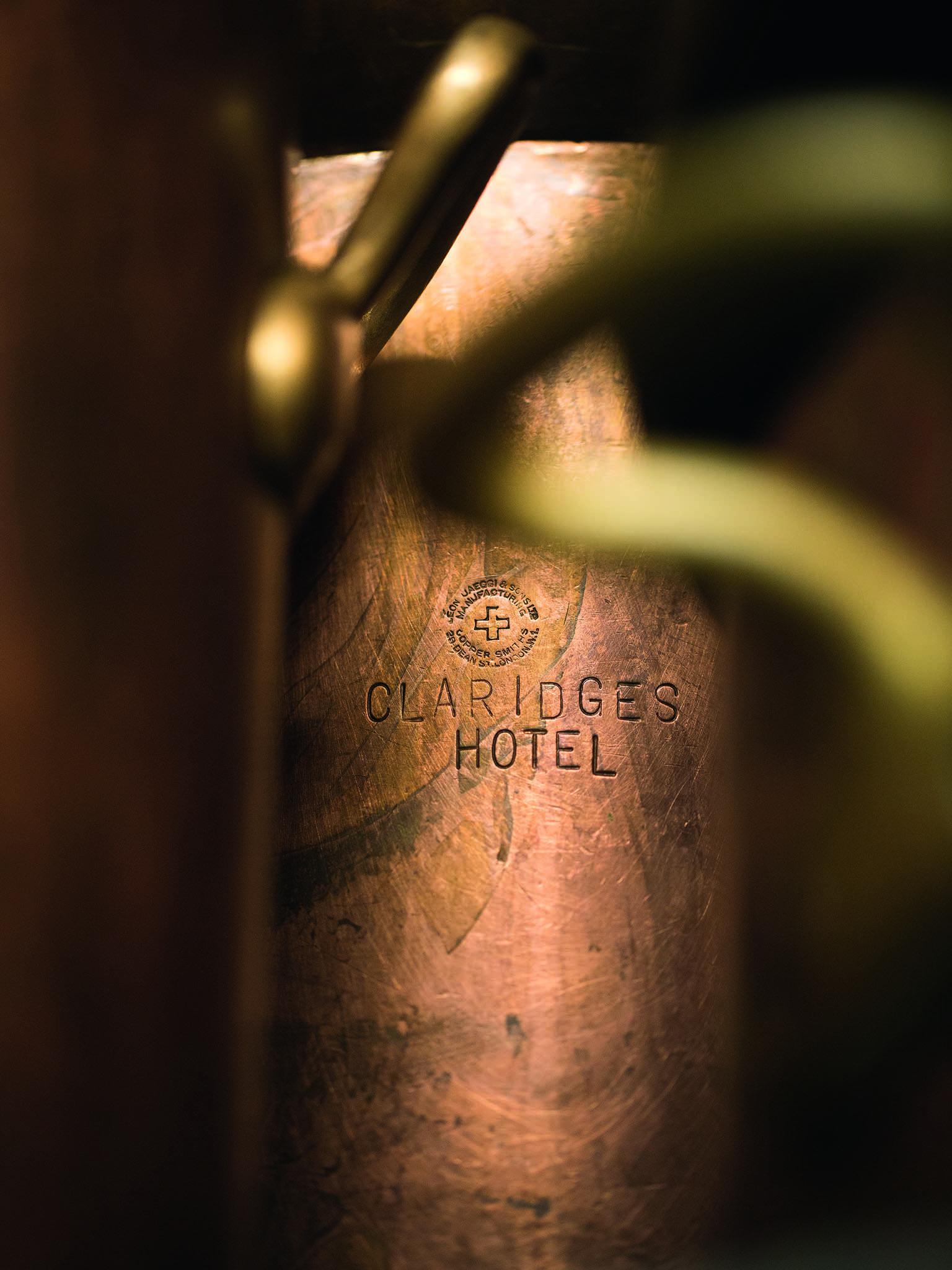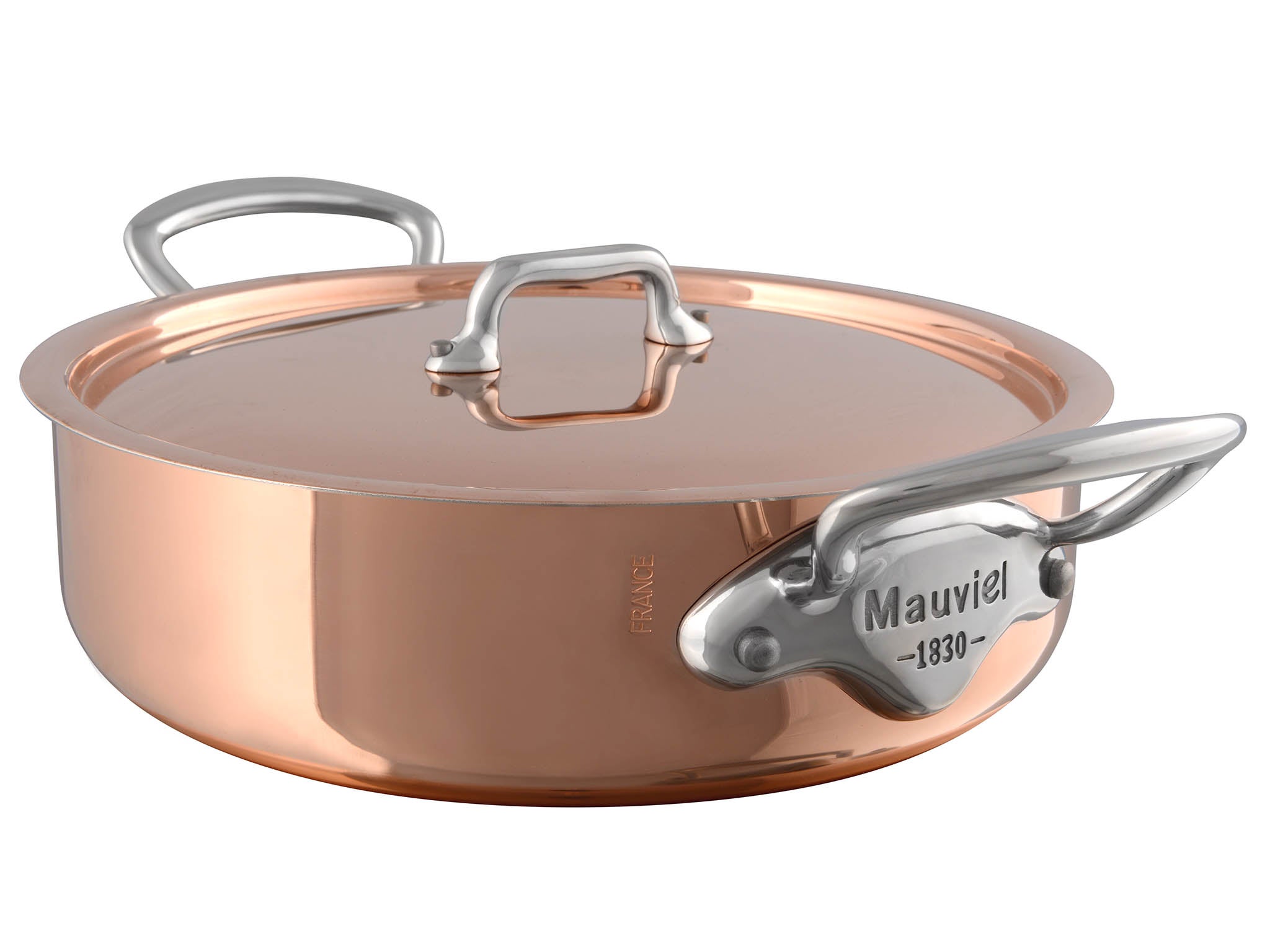How copper cookware became the kitchen workhorse
For chefs, copper means only one thing – cookware. They’re expensive and high maintenance, but a copper pan is still one of the most coveted pieces of kitchen kit

Your support helps us to tell the story
From reproductive rights to climate change to Big Tech, The Independent is on the ground when the story is developing. Whether it's investigating the financials of Elon Musk's pro-Trump PAC or producing our latest documentary, 'The A Word', which shines a light on the American women fighting for reproductive rights, we know how important it is to parse out the facts from the messaging.
At such a critical moment in US history, we need reporters on the ground. Your donation allows us to keep sending journalists to speak to both sides of the story.
The Independent is trusted by Americans across the entire political spectrum. And unlike many other quality news outlets, we choose not to lock Americans out of our reporting and analysis with paywalls. We believe quality journalism should be available to everyone, paid for by those who can afford it.
Your support makes all the difference.It’s not particularly strong or hard but it is one of the easiest metals to bend. You’ll find it in electrical wiring and it covers our one and two pence coins. It’s even in our bodies, although only in tiny amounts.
But for the cook – professional or home – copper means one thing and that’s cookware. It’s expensive and high maintenance but also one of the most coveted pieces of kitchen kit. Martyn Nail – executive chef at Claridge’s in London – is a fan.
“At Claridge’s today we cook a lot with stainless steel pans but, for me, there is nothing quite like cooking with a copper pan. An induction range was installed in the kitchen a few years ago but I insisted on keeping one metal plate so that we could continue to use the copper pans for consommé and poaching whole salmon,” he says.

Rewind 100 years and copper cookware would have been the de facto choice in hotels, restaurants, and stately homes. Walk into the kitchens at Petworth House in West Sussex – now a National Trust property – and feast your eyes on some of the 1,000 pieces of copperware that are in their collection. In the 19th century, copper cookware – stock pots, sauté pans, jelly moulds – were used at Petworth to make up to 100 meals per day. Copper cookware was the kitchen workhorse.
It’s copper’s unsurpassed heat conductivity that makes it so welcome in the kitchen. A copper pan will heat up almost instantly and cool down just as fast, giving the cook incredible control. If properly cared for, they’ll also last, handed down from one generation to the next.
Nail agrees. “The copper pots at Claridge’s are particularly special as some of them were actually used by Escoffier and go back to the late 1890s so they have really stood the test of time.”

We first fashioned copper into tools over 10,000 years ago and the Mesopotamians shaped copper into moulds. The Romans got their copper from Cyprus, even calling it aes Cyprium or “metal of Cyprus”. Today, Chile is the world’s leading producer of copper.
There are some downsides to copper cookware. It isn’t cheap. The good stuff – and it’s not worth buying anything else – is expensive. They’re made by skilled craftsmen and that takes time. Copper pans need to have a substantial heft to them to stand up to the heat and what you’d buy for your home kitchen should be the same quality as you’d find in a restaurant.
For many, copper cookware is synonymous with Mauviel. Mauviel is based in a village in Normandy called Villedieu-les-Poêles, near Mont Saint-Michel, where it’s been located since it was founded in 1830 by Ernest Mauviel. In fact, the town is known as “the city of copper” and has a long history of copper manufacturing.
Today, Mauviel is still a family business, run by Valérie Le Guern Gilbert. She says that it can take up to eight hours to create one piece of Mauviel cookware and they’ll even create bespoke pieces for chefs. They’ve retinned all the pots of the Élysée, the presidential residence in Paris, and the oldest pot they’ve retinned dates back to 1740.

The copper pans you’ll buy from Mauviel or other manufacturers are typically lined. This is because copper forms toxic substances when it comes in contact with acids so it’s usually lined with another metal like tin or stainless steel. Tin was the traditional method of lining copper but it wears and eventually you’ll need to reline your pan. If you do have a tin-lined pan use wooden implements and avoid metal which can easily damage the surface. Newer, stainless steel-lined pans are more robust.
The exception are unlined copper bowls used to beat egg whites, for example. They are perfectly safe to use and provide exceptional results.
Copper needs to be washed and dried thoroughly so no leaving it to soak overnight. And of course it will tarnish. You can use commercial cleaners or use a cut lemon and some salt to keep the outside polished without looking overly sparkly. The servants back at Petworth would have cleaned copper with a mix of sand, salt, vinegar and hot water. And of course a lot of elbow grease.
Copper is an investment but surely one that is worth it. Holding a piece of Mauviel copper is like holding a piece of history – a history that hopefully will continue long into the future. Valérie Le Guern-Gilbert is clearly aware of the responsibility she bears. “I am so proud,” she says. “I am the 7th generation and I hope my children to be the 8th generation.”
Claridge’s: The Cookbook by Martyn Nail and Meredith Erickson (Mitchell Beazley)
Join our commenting forum
Join thought-provoking conversations, follow other Independent readers and see their replies
Comments